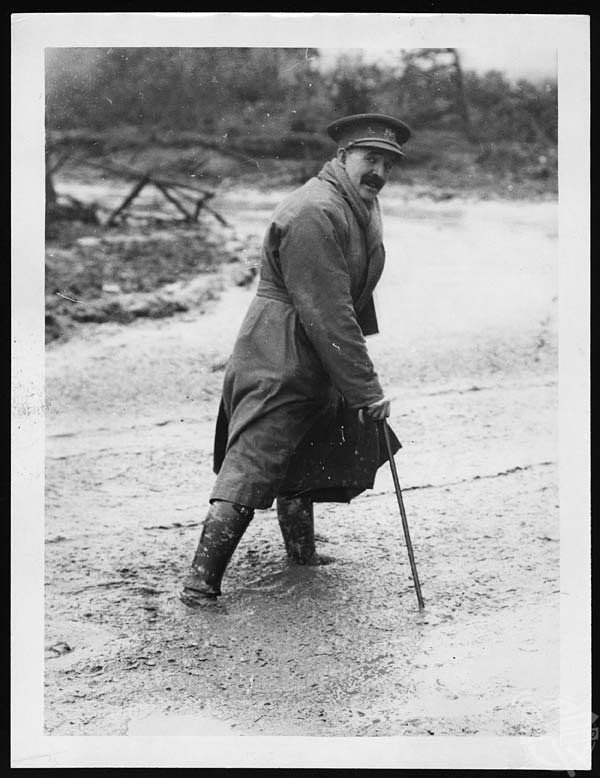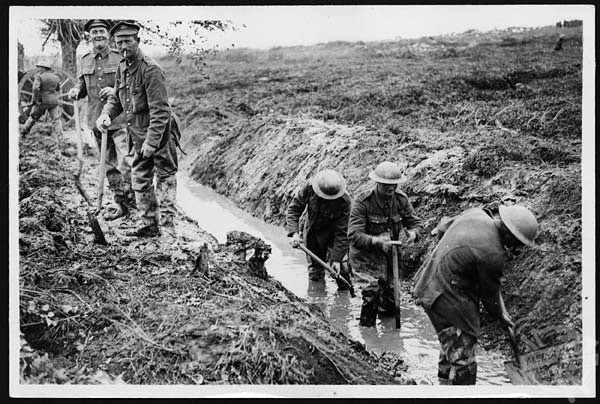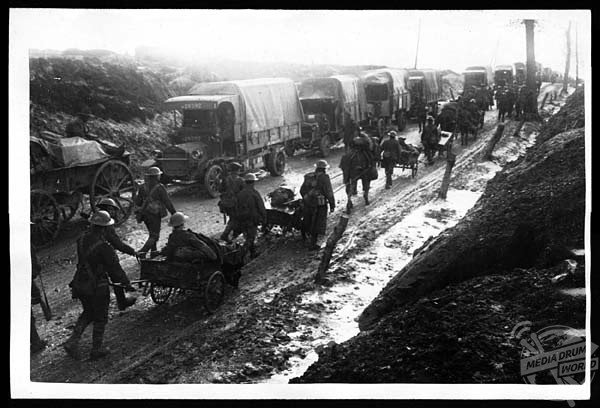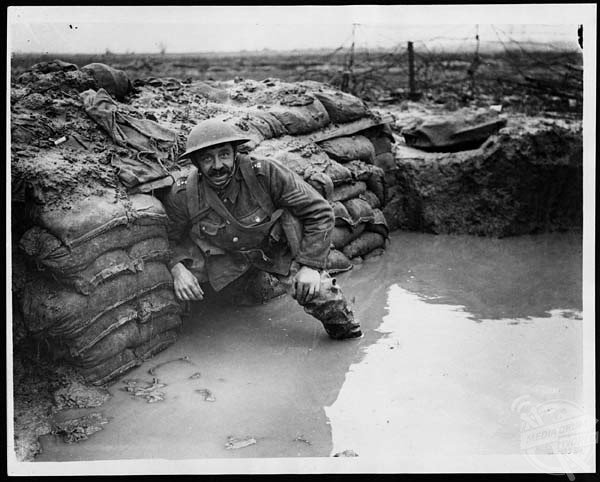
By Alex Jones
MUDDY Hell: Shocking 100-year-old pictures show the quagmires which British troops in the First World War had to fight, live, and march through.

Sobering images from the Great War show soldiers battling free a car entrenched in deep mud; a smiling trooper putting on a brave face as he examines his flooded dugout on the Front Line; and an exhausted mule presumably drawing its last breaths as French soldiers desperately try and pull the doomed beast out of a deluged shell hole.

Another brutal shot, part of the National Library of Scotland’s online collection, shows a struggling soldier attempting to drag a large gun along a sodden railway track surrounded by bog.

Due to scientific and mechanical advancements – such as machine guns, tanks and aeroplanes – soldiers on all sides of the Great War spent much of their time between 1914 and 1918 sheltering in trenches, knowing they would face almost certain death if they went ’over the top’ into No Man’s Land. The trenches were grim during the hot weather – as they were invested with lice and rodents – but far worse when heavy rains or cold weather set in as the hastily constructed lines of defence were prone to flooding or even collapsing. Poor living conditions saw thousands of Tommies ending up with frostbite or trench foot – where soldier’s feet would become numb, blistered or even gangrenous – or struck with other illnesses as the war dragged on over several winters.

In addition, as the front line was fairly static throughout the war, millions of men and machines would frequently trundle over the same ground again and again. This would churn the already muddy ground into a sticky gloop which could readily trap animals, troops and vehicles – particularly after torrential downpours. Soldiers would often recount the unpleasant conditions in the front line trenches which they would sometimes occupy for weeks at a time, always under the shadow of death.






